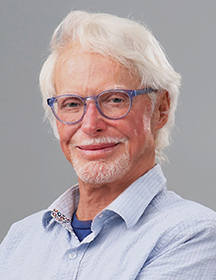.png)
The following blog post is sponsored by Dalton Myoskeletal.
How did you develop Myoskeletal Alignment Techniques?
Myoskeletal Alignment Techniques (MAT) was born from a deep passion for combating America’s pain epidemic. I began studying under influential figures like Dr. Ida Rolf, then at the Menninger Foundation, Mueller College of Holistic Studies, and with Philip E. Greenman at Michigan State University College of Osteopathic Medicine. These early educational experiences laid the foundation for my approach to manual therapy.
Over the course of four decades in private bodywork practice, I’ve kept a close eye on the latest developments in manual medicine research and continually innovated to refine MAT into a revolutionary bodywork system.
What makes MAT different from general massage therapy?
What sets MAT apart is its brain-based methodology, harnessing the reflexogenic relationship between muscles, ligaments, and joints. By utilizing unique muscle-balancing techniques and joint-stretching maneuvers, MAT addresses joint fixations and promotes pain-free movement.
Most massage therapists and bodyworkers have mistakenly chased pain around a client’s body. MAT takes a holistic view, understanding that imbalances in one area can lead to compensations and problems elsewhere. For instance, if a client experiences pain in the left hip one week and in the right knee the next, instead of solely focusing on those specific areas, Master Myoskeletal Therapists analyze the entire body to uncover underlying causes.
We empower therapists and clients to collaborate in the healing process by delving into the body’s intricate puzzle. This comprehensive approach allows us to restore optimal alignment and function, resulting in lasting relief and improved quality of life.
You often talk about “leveling the head and tail.” Why is this concept important?
Leveling the head and tail is crucial because it addresses the root of the client’s pain pattern by correcting imbalances resulting from anatomical asymmetry. No individual is entirely symmetrical; we all have one-sided motor dominance, which can lead to imbalances. Additionally, injuries force us to alter our movement patterns to minimize pain and prevent further damage. Habits like prolonged hunching at a computer or carrying heavy bags over one shoulder create uneven weight distribution and misalignment throughout our musculoskeletal system.
As these imbalances persist, muscle guarding and aberrant postural patterns become ingrained in the nervous system. Spinal cord reflexes initiate compensatory changes in the midbrain, causing further compensations up and down the kinetic chain. Over time, the brain perceives abnormal muscle tension and postural adjustments as normal, solidifying these faulty patterns.
Remarkably, the body adapts to these changes, even remodeling bones in response to abnormal stresses. While some may adapt without pain or discomfort, most people develop persistent pain patterns. Techniques aimed at leveling the head and tail play a vital role in rebalancing the body and retraining the nervous system to restore proper alignment. By addressing the core issues, these methods offer a chance to break free from pain patterns and promote long-term wellness.
Where can people find out more information about upcoming courses and workshops?
Visit erikdalton.com to register for online courses and upcoming workshops. You can also visit our Instagram profile @daltonmyoskeltal or Facebook page “Erik Dalton Myoskeletal Therapy” to see demonstrations of MAT techniques.

Erik Dalton, PhD